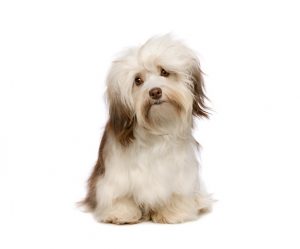
We Tried 5 Fresh Dog Food Brands
Is all the marketing hype worth it? Did our dogs enjoy them? Here’s our dogs’ totally honest review.
Havana Silk Dog
This cute little plush has become a rare commodity. Having totally disappeared from Havana, the breed has a few breedings in Europe but especially in the Nordic countries. Even if he is more known among Americans, he is not really fashionable there either. He is a pretty little dog with beautiful qualities whose popularity never came back after disappearing from Cuba. He is nevertheless an excellent subject making him an outstanding life companion.
Intelligent, lively, active, vigilant, affectionate, gentle and kind, the Havanese is an excellent companion dog. He loves his masters and contact with children. He shares all their games and asks for more without ever getting tired of them. He hates loneliness and loves to be in the presence of his family at all times.
He is a good alarm dog that reacts to the slightest noise and reports it with thunderous barks. He is not aggressive but on the lookout.
He needs to be educated very early to control his slight tendency to become temperamental.


This very graceful and vigorous little dog has a lively and flexible gait. Low on legs and very hairy, the Havanese looks like a nice doggie. His small size give him a nice fluffy disheveled appearance.
Between 23 and 27 cm (9.06 to 10.63 inches) for the male
Between 23 and 27 cm (9.06 to 10.63 inches) for the female
Between 4 and 6 kg (8.82 to 13.23 pounds) for the male
Between 4 and 6 kg (8.82 to 13.23 pounds) for the female
His coat is generally light to dark beige, tan brown, grey and white, reddish brown, tawny and sometimes white but rarely pure.
His coat is soft and flat, with pretty, slightly curly strands of hair, especially at the tips.
His head is broad and very slightly domed and has a moderate marked stop. His large almond-shaped eyes are dark brown. His ears, drooping along the cheeks, form a slight fold. His nose is brown or black. His tail is carried raised and either curled over the back or cross-shaped.
According to the FCI breeds nomenclature, this breed belongs to group 9, section 1 and is #250
Does this dog suit your lifestyle?
Every dog breed has its own characteristics. However, the actual character of a dog can vary from one to another within the same breed.
Find out if the Havanese is your ideal dog breed with our quiz.
That will take you less than 3 minutes!
Take the quiz





This little apartment dog is a real indoor dog. Despite his beautiful coat, he hardly loses any hair, so he is very clean even though he is more often indoors than outdoors.
Essentially a companion dog, he is naturally gentle and kind, but must be given a good firm education to prevent him from becoming too capricious.
He loves all the members of the household and has to live close to his family to be happy. This small dog lives only to be near his masters and play with them. He cannot live alone away from everyone. He hates any form of solitude.
Despite his small size, the Havanese is very robust. He only fears humidity and cold. For the rest, he is rarely sick and enjoys excellent health and a very appreciable life expectancy.
GROOMING
His particular fleece requires a good daily brushing to avoid getting knots in his slightly curly hair. It is also recommended to bathe him every two or three months to ensure a beautiful coat. It is also preferable to clean his eyes regularly to prevent brown streaks from accumulating.
Several assumptions circulate on the origin of the Havanese. Some claim that he is descended from the Bolognese having been crossed with Poodles and that he is originally from Cuba, hence his name Havanese. Others claim that he comes directly from Europe and that he was later exported to Havana by Italian sailors.
An Italian Bichon could have been involved, either the Maltese or Bolognese crossed with a Miniature Poodle. Several versions exist on his origins but none have ever really been officialized until now.
Wherever he comes from, the breed has developed along the Italian and Spanish coastline. A few specimens remain today in Europe and in the United States, but he seems to have completely disappeared from Havana, which is said to be for some, his country of origin.
Visual encyclopedia of dog breeds

Is all the marketing hype worth it? Did our dogs enjoy them? Here’s our dogs’ totally honest review.